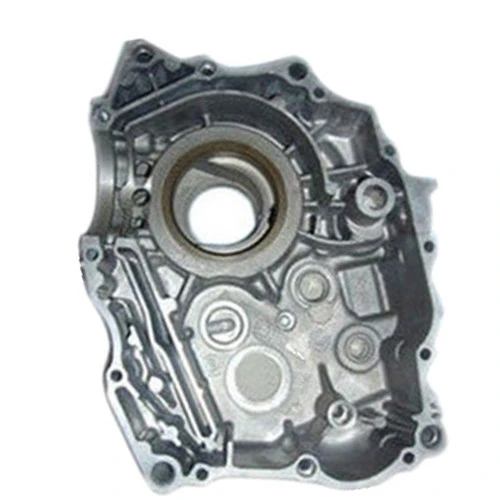Mobile:+86-311-808-126-83
Email:info@ydcastings.com
die cast aluminum
The Versatility of Die-Cast Aluminum A Comprehensive Overview
Die-casting is a manufacturing process that involves forcing molten metal into a mold cavity under high pressure. Among various metals used for die-casting, aluminum stands out as one of the most popular choices due to its remarkable properties and wide range of applications. This article explores the advantages, processes, and applications of die-cast aluminum.
Properties of Die-Cast Aluminum
Die-cast aluminum is lauded for its excellent combination of properties. First and foremost, aluminum is lightweight, which makes it ideal for various industries seeking to reduce weight without compromising strength. The lightweight nature of aluminum also enhances fuel efficiency in automotive applications.
Furthermore, aluminum exhibits good corrosion resistance, which is beneficial for products exposed to harsh environments. Die-cast aluminum components are often protected with coatings to enhance their durability further. The metal’s conductivity is another advantage; aluminum conducts heat and electricity effectively, making it suitable for electronic components and heat sinks.
In addition, aluminum can be easily machined, allowing for intricate designs and tight tolerances. The surface finish of die-cast aluminum parts can also be enhanced through various methods, including anodizing, which improves both aesthetics and resistance to scratching.
The Die-Casting Process
The die-casting process for aluminum typically involves several key steps. Initially, the metal is melted in a furnace, reaching temperatures above 660 degrees Celsius (1220 degrees Fahrenheit). Once molten, the aluminum is injected into a steel mold at high pressure. This rapid injection and solidification process allows for the creation of complex shapes with excellent detail and minimal waste.
There are two primary types of die-casting processes high-pressure die-casting (HPDC) and low-pressure die-casting (LPDC). HPDC is the most commonly used method for producing aluminum components, known for its speed and ability to produce high-volume parts. In contrast, LPDC is more suitable for larger parts or those requiring a higher degree of control over the cooling process. Each process has its distinct advantages and is chosen based on the specific requirements of the application.
die cast aluminum

Applications of Die-Cast Aluminum
The applications of die-cast aluminum are vast and varied, spanning multiple industries. In the automotive sector, manufacturers employ die-cast aluminum for engine blocks, transmission housings, and wheel rims, where lightweight and strength are critical. As electric vehicles gain prominence, die-cast aluminum is increasingly used for battery enclosures and structural components to enhance overall efficiency.
The aerospace industry also benefits from die-cast aluminum parts, as the lightweight characteristics contribute to fuel efficiency and performance. Components such as aircraft frames and engine parts are often manufactured using this process to meet rigorous safety and performance standards.
In the electronics sector, die-cast aluminum provides housings and heat sinks for electronic devices. Its thermal conductivity helps dissipate heat efficiently, ensuring better performance and longevity for sensitive electronic components.
Moreover, die-cast aluminum finds its place in consumer products, from kitchenware to furniture. The aesthetic appeal of die-cast aluminum allows designers to create stylish products, while its physical properties ensure they are functional and durable.
Environmental Considerations
Die-cast aluminum is also favored for its environmental benefits. Aluminum is highly recyclable, and the recycling process consumes significantly less energy compared to primary aluminum production. As industries move towards sustainable practices, the use of recycled aluminum in die-casting presents an eco-friendly solution, reducing overall carbon emissions.
Conclusion
Die-cast aluminum is a remarkable material that combines lightweight advantages, excellent mechanical properties, and aesthetic versatility. Its application across various industries, from automotive to aerospace and consumer products, highlights its significance in modern manufacturing. As technology advances, the processes and techniques for die-casting aluminum will continue to evolve, opening new avenues for innovation and sustainability. In a world increasingly focused on efficiency and environmental responsibility, die-cast aluminum stands out as a quintessential material for the future.
-
Why Should You Invest in Superior Pump Castings for Your Equipment?NewsJun.09,2025
-
Unlock Performance Potential with Stainless Impellers and Aluminum End CapsNewsJun.09,2025
-
Revolutionize Your Machinery with Superior Cast Iron and Aluminum ComponentsNewsJun.09,2025
-
Revolutionize Fluid Dynamics with Premium Pump ComponentsNewsJun.09,2025
-
Optimizing Industrial Systems with Essential Valve ComponentsNewsJun.09,2025
-
Elevate Grid Efficiency with High-Precision Power CastingsNewsJun.09,2025











